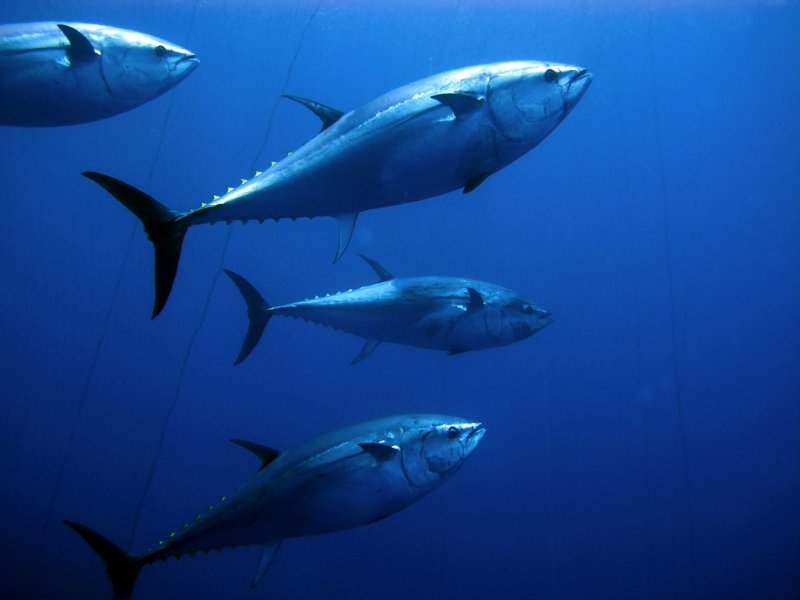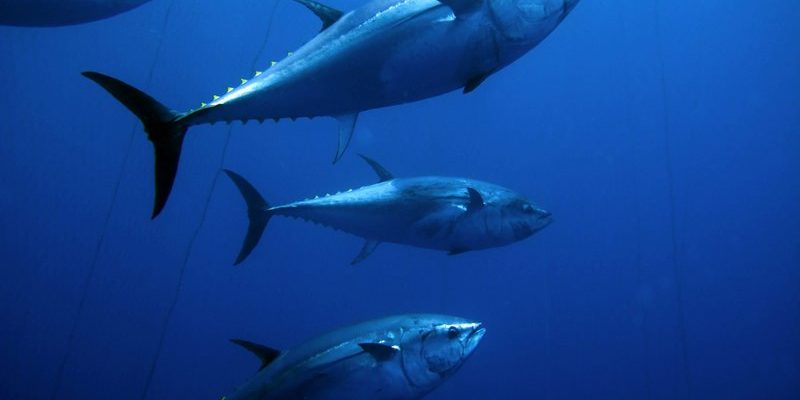
These fish are some of the largest in the ocean, capable of growing to over 1,000 pounds! Their sheer size and strength make them apex predators, meaning they’re at the top of the food chain. But more than that, they’re vital for the balance of the marine life around them. Let’s dive into why the Bluefin tuna matters so much and what happens when their populations change.
Understanding the Bluefin Tuna
The Bluefin tuna is part of the Scombridae family, which includes other fast swimmers like mackerel and bonito. You might see them cruising through the open ocean, their sleek bodies cutting through the water with grace. There are three main types: the Atlantic, Pacific, and Southern Bluefin tuna. Each one has a slightly different habitat, but they all share that striking blue color and impressive speed.
These fish are incredibly fast, clocking in at speeds up to 45 miles per hour. That’s like a race car zooming down the highway! They’re built for speed, with streamlined bodies that let them catch prey efficiently. Bluefin tuna primarily eat smaller fish like sardines and mackerel, making them a vital link in the dietary chain of the ocean.
The Bluefin Tuna as a Predator
As apex predators, Bluefin tuna have a significant impact on the species below them in the food chain. By preying on smaller fish, they help control the population of these species, preventing any one group from becoming too dominant. This balance is crucial for maintaining a healthy ecosystem. If the Bluefin tuna population were to decline, you could see a surge in smaller fish populations, which may lead to overgrazing on the plankton that many marine animals depend on.
Moreover, Bluefin tuna are also prey for larger marine animals like sharks and orcas. This means they play a key role not just as hunters but also as a food source for other species, contributing to the rich tapestry of ocean life. It’s a classic case of the circle of life—each species supporting the others in a complex web.
Impact on Fisheries and Human Activity
You might be wondering how human activities impact Bluefin tuna populations. Overfishing is a significant concern. Because of their popularity in sushi and sashimi, Bluefin tuna have been heavily targeted. This has led to declining populations, making them a subject of conservation efforts.
When we overfish Bluefin tuna, we’re not just depleting a species; we’re affecting the entire marine ecosystem. With fewer Bluefin tuna to control the smaller fish populations, we could see unexpected shifts in marine life. For example, if sardines become too plentiful, they could consume more plankton, which many other marine animals depend on for food. The ripple effect can have devastating consequences on ocean health.
Conservation Efforts and Their Importance
Recognizing the importance of Bluefin tuna has led to various conservation efforts. Organizations around the world are working to create sustainable fishing practices and regulations to protect these fish. For example, the International Commission for the Conservation of Atlantic Tunas (ICCAT) aims to manage Bluefin tuna fisheries to restore their populations.
These efforts are essential not just for the Bluefin tuna but for the overall health of our oceans. By supporting sustainable fishing practices, we can ensure that future generations can enjoy the rich biodiversity that the ocean offers. And you might get a chance to see these incredible fish swimming in their natural habitat!
Bluefin Tuna and the Economy
Besides their environmental role, Bluefin tuna also have economic significance. The global demand for Bluefin tuna, especially in the culinary world, has created a multi-billion-dollar industry. Countries like Japan, where sushi is a cultural staple, play a major role in the demand.
However, this economic activity must be balanced with sustainability. If overfishing continues unchecked, it could lead to economic collapse in fishing communities that rely on Bluefin tuna. This is a perfect example of how intertwined human activities and ecological health are—what benefits one can harm the other if not managed correctly.
Understanding the role of Bluefin tuna in marine ecosystems is crucial for preserving ocean health. These majestic fish are more than just a delicacy; they’re a backbone of marine life, predators that keep the balance among various species. Their plight sheds light on larger issues of sustainability and conservation.
We all share the responsibility of protecting our oceans and their inhabitants, including the Bluefin tuna. By supporting sustainable fishing and conservation efforts, we can help maintain the harmony of marine ecosystems. So, next time you think about the ocean, remember how important the Bluefin tuna is in keeping that world vibrant and thriving. Let’s work together to ensure these incredible fish can swim freely in our oceans for generations to come.

